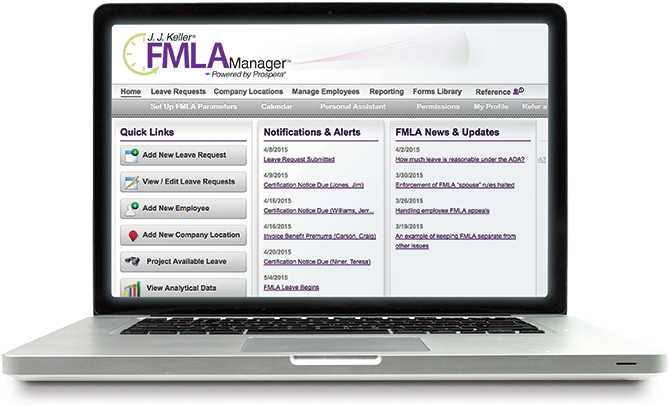FMLA Articles
3 benefits of training employees on the FMLA
Key to remember: While employee training isn’t mandated by the FMLA, who wouldn’t want to take some steps to make FMLA leave administration easier in the long run?
Applies to: All public employers and private employers with 50 or more employees.
Impact to customers: Training employees on the FMLA, including their responsibilities and potential repercussions for not meeting their responsibilities may result in easier FMLA leave administration.
Outside of the FMLA poster, many employers would rather not give employees more information about their rights under the FMLA. But what if employers provided training that focused on employee responsibilities? The information in the training could also include your related company policies as well as the FMLA limitations. How might such training affect your FMLA administration world?
It might just make it easier.
A few benefits employee FMLA training could produce include the following:
- You may see fewer questions about FMLA leave in relation to reasons that do not qualify, as employees will have a better understanding of the FMLA’s limitations. A brief overview of what reasons qualify for FMLA protections and examples of what reasons do not, could result in fewer requests for time off to take Fido to the vet or to stay home and watch the kids because a spouse has a trip. The FMLA protections are potent, and the reasons for leave need to meet certain criteria.
- More employees will follow your call-in policies and procedures, which can be particularly helpful for unforeseen intermittent FMLA leave. You may require that employees follow your policies and informing them of this can help reduce the no-call-no-show events when an employee has a certified leave reason. They can learn that an FMLA certification is not a license to ignore your policies.
- Potentially less abuse if you inform employees that you take FMLA leave seriously and leave abuse can result in discipline up to and including termination. You may ask for recertifications, periodic status reports, and even investigate suspected abuse.
Such training could include the sequence of events that must happen. This might inform employees that, to put you on notice of the need for leave, they must provide certain information, such as the timing and duration of the leave and the basic reason (e.g., the employee is unable to work, to care for a family member, bonding, military family). From there, the employee will receive certain information (from the eligibility/rights & responsibilities notice) and might be expected to provide a certification.
This might be a nice opportunity to inform employees of the risks of not providing a requested certification, including that without the certification, the FMLA’s job protections might not apply to the absence.
The options on what you want employees to know about the FMLA are generally up to you. Instead of looking at it strictly from an employee rights perspective, the training would be from an employee responsibilities perspective. Employees then should be better informed on what is expected of them.
If a one-hour training session could save you 1.5 hours per month, that would equate to 18 hours per year. Might be worth a try.
You may also enjoy the following articles:

The J. J. Keller FMLA Manager service is your business resource for tracking employee leave and ensuring compliance with the latest Federal and State FMLA requirements.